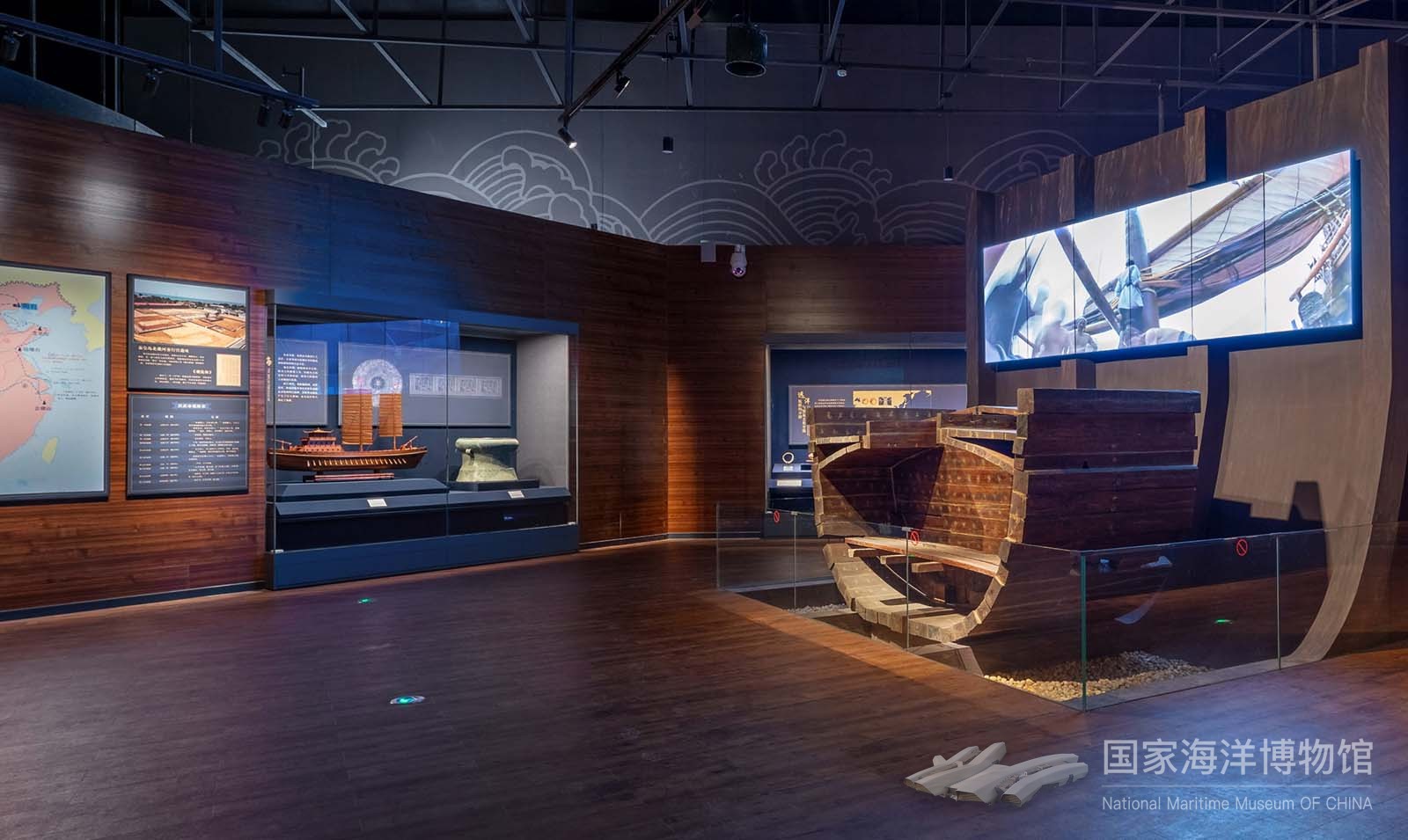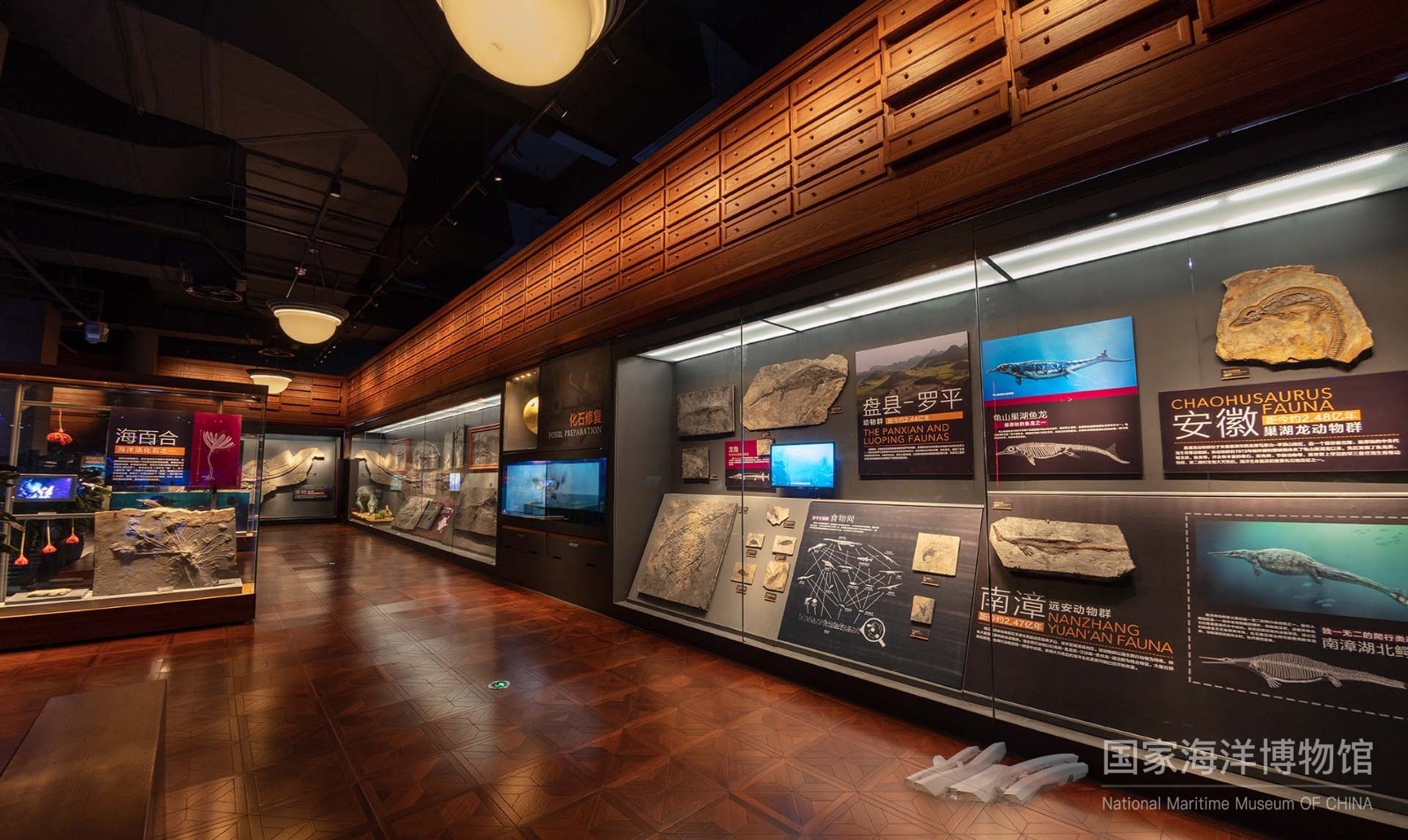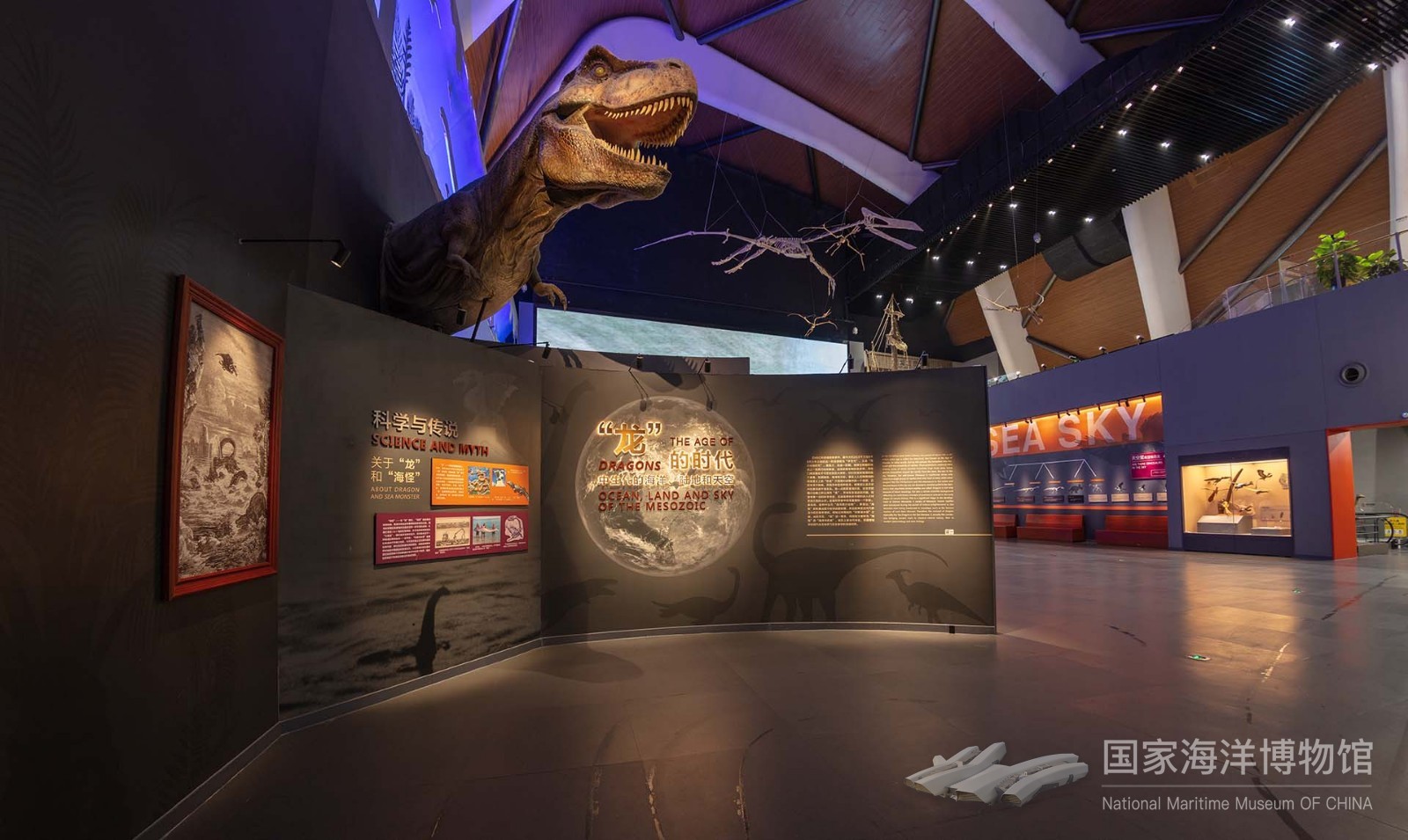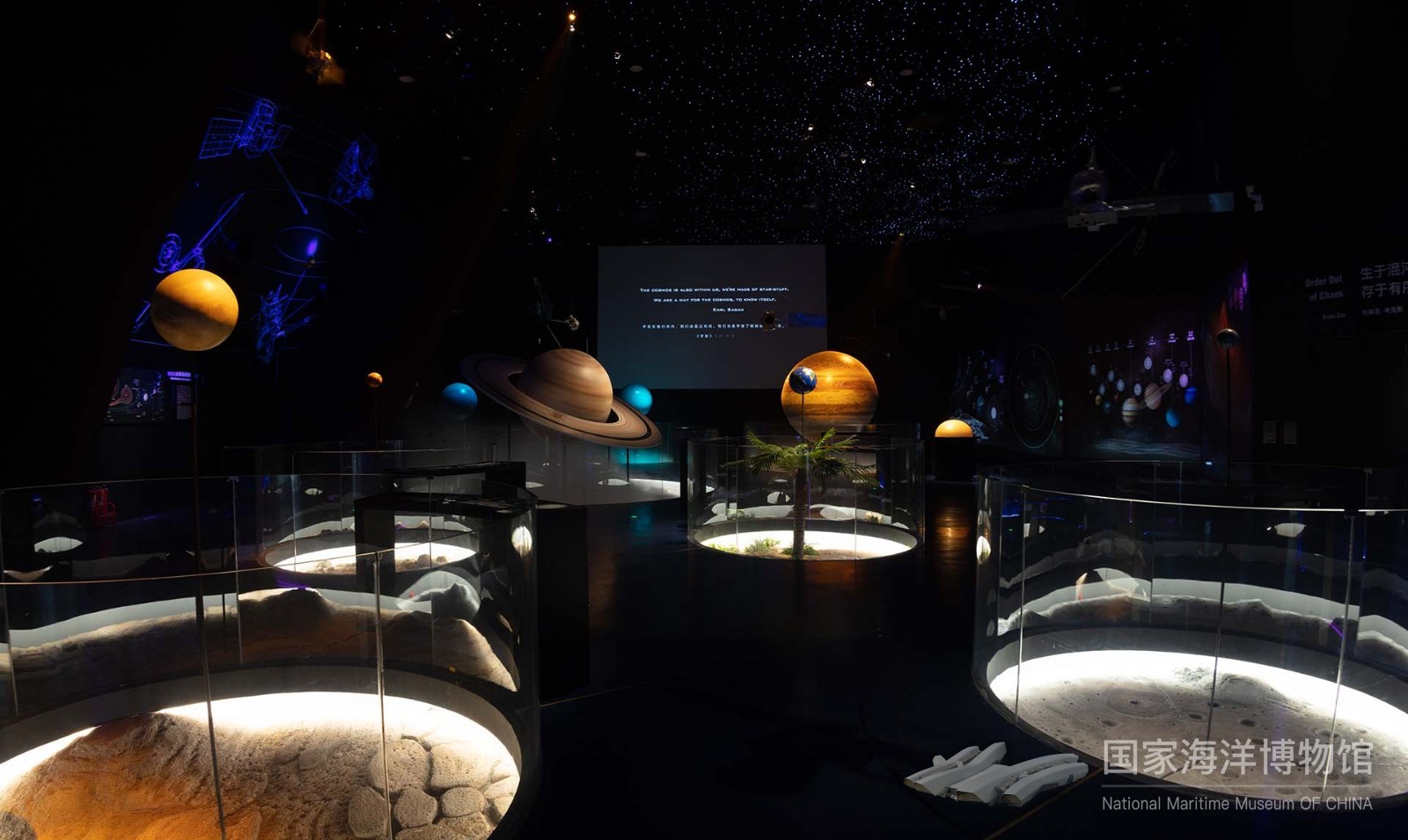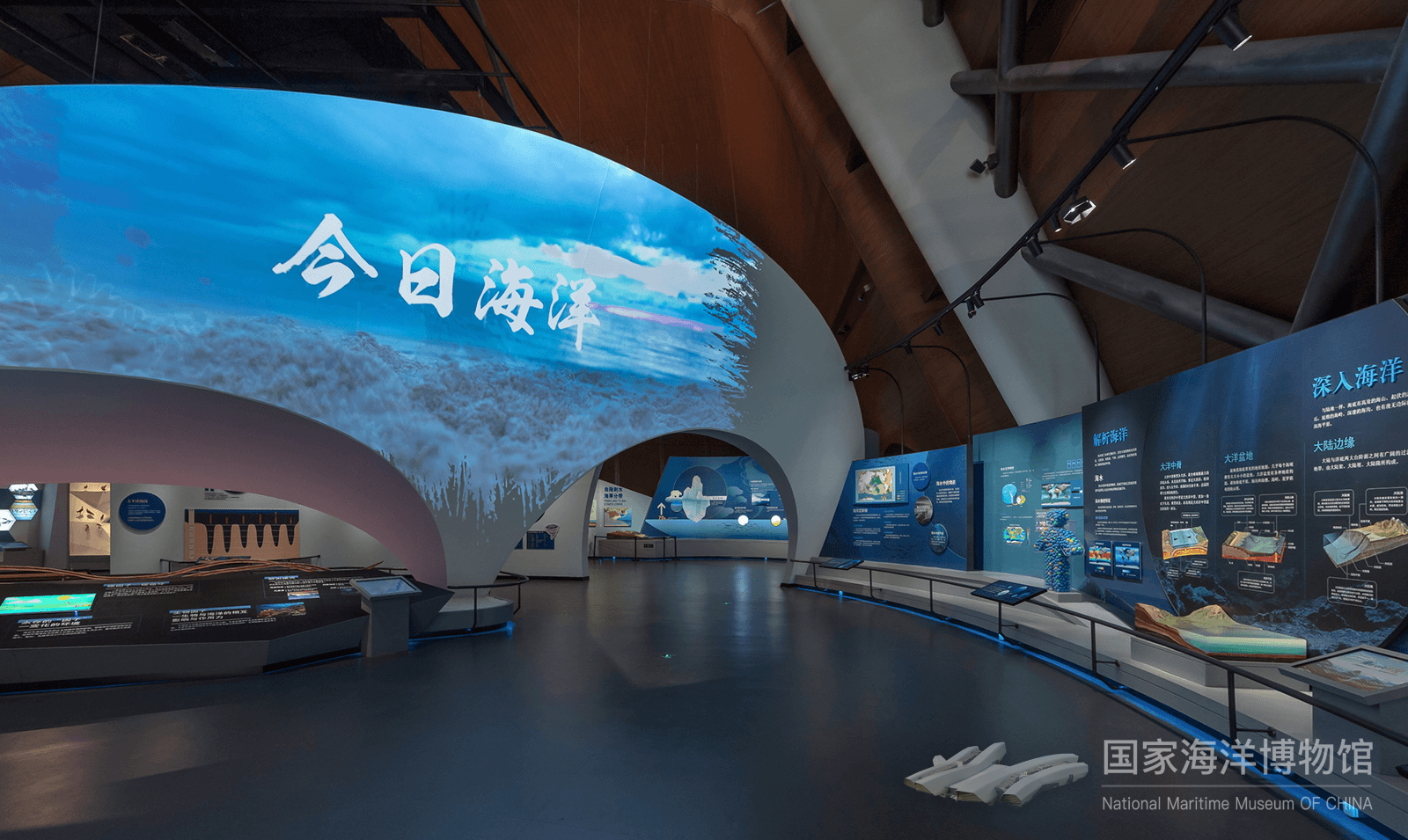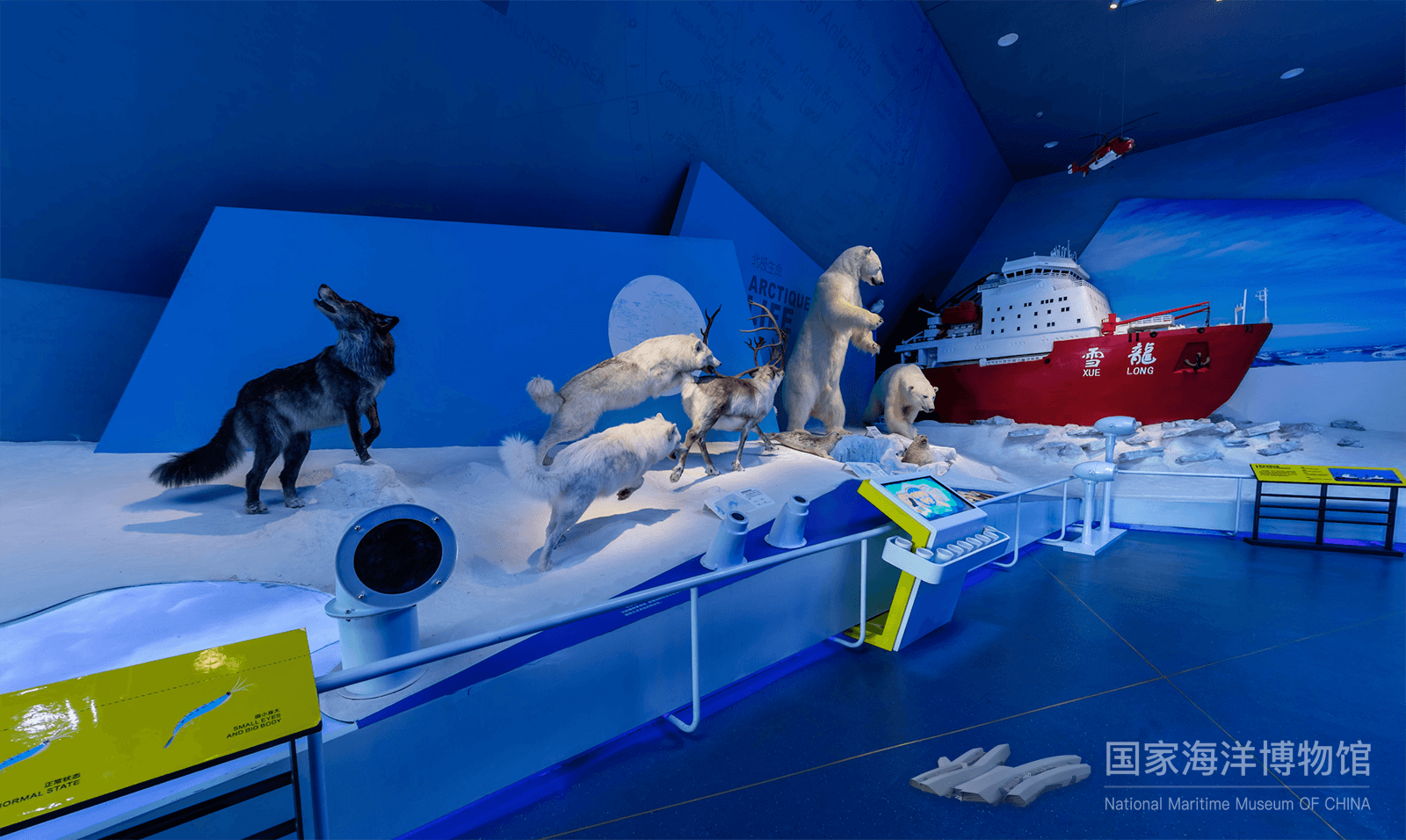
Online Exhibition Resources - National Marine Museum of China
Chinese Marine Civilization - Chapter One
In the history of Chinese civilization, marine culture, together with fanning culture and nomadic culture, has created a pattern of pluralistic integration, which constitutes the basis for the survival and development of the Chinese nation.
In the past long history, the ancestors living in the coastal areas have created a brilliant Chinese marine civilization in the process of understanding and developing the ocean. With the improvement of shipbuilding and navigation technology, Chinese and foreign maritime exchanges become more frequent, especially the world-famous Maritime Silk Road, which has created the glory of ancient Chinese marine civilization.
The great discovery of geography since the end of the 15th century unveiled the prelude of the human ocean era, triggering a surging trend of globalization. In this period of historical transformation, firstly, China faced the constant game of the bans and reopening of marine trade, and then experienced the arduous process of integrating into the world system in the past century, and finally prompted the Chinese nation's ocean consciousness to awaken.
The Chinese marine civilization carries the characters and traditions of the Chinese nation, which includes openness, tolerance, innovation and enterprising, and has made great contributions to the formation and development of human marine civilization.
(Click here to visit the virtual exhibition)
Chinese Marine Civilization - Chapter Two
(Click here to visit the virtual exhibition)
Ancient Ocean
(Click here to visit the virtual exhibition)
The Age of Dragons - Ocean, Land and Sky of the Mesozoic
In the 4.6-billion-year Earth's history, the period of about 250 to 66 million years ago is called the Mesozoic, also known as the Age of Reptiles. In other words, during this period, the biosphere was featured with the prosperity of reptiles. These prehistoric creatures were diverse, some of which reached incredibly large body sizes, living almost everywhere around the world, from the land, the sea to the sky. However, the well-known Dinosaur in traditional sense only refers to a single group of reptiles that only lived on land, while other dragons like the ichthyosaurs and the plesiosaurs in the ocean and the pterosaurs in the sky are not dinosaurs. Another point to be clarified is that why these ancient reptiles are called Dragons is not only because of literal meanings, but also a certain scientific background reflecting our preliminary concepts of prehistoric animals in the early stages of natural history. This is a significant stage in the development of science. Moreover, a variety of Mesozoic marine reptiles were introduced during the period of science enlightenment as Sea Monsters even being mentioned in nowadays, such as the famous mystery of Loch Ness Monster. Therefore, the concept of Dragon, especially the Sea Dragon or the Sea Monster, is actually the connection bridging ancient myth to classical natural history, then to modern paleontology and even biology.
(Click here to visit the virtual exhibition)
Happy Sea World
Welcome to the happy sea world!
This gallery is specially designed for children to experience the ocean. Many experience projects are included here, such as: The Mysterious Kelp Forest, The Realistic Underwater World, The Sports Meet Under Water and so on.
The vast and mysterious ocean is fascinating. The more you learn about it, the more you love it and cherish it, and know how to protect it better. Let's walk into the blue world together and start a journey of exploration to the ocean.
(Click here to visit the virtual exhibition)
Marine Astronomy
The oceans and the starry night sky are vast and filled with... the unknown.
The sea has always resisted human exploration by utilizing its immensity and its power.
However, stars have, for centuries, helped mariners traversing the world’s oceans to identify where they are.
Though we have mapped every coastline and discovered new continents and islands, we still hold the world's oceans in awe.
With the same curiosity and awe, we turn our gaze towards the same eternal starry sky. We have thus entered a new era of exploration.
We have set sail again, as always, out of curiosity. We have gone beyond the farthest edge of the solar system, landed on strange planets and moons, and observed galaxies that are hundreds of millions of light years away.
We are setting sail for far off places, though, not knowing exactly where our destination lies.
Our efforts of exploration may shed light on these questions - Where are we from? Are we alone in the universe?
These are the great, fundamental questions of science, and great questions that have, as of yet, never been answered in all of recorded human history.
(Click here to visit the virtual exhibition)
The Nowdays Ocean
Mankind's knowledge of the ocean is still very limited, compared to what we have of the land.
If the sea water could be drained, you would find the landform of the seabed, quite similar to terrain, is composed of not only mountains and canyons but also plains and hills. However, everything happen in the ocean is vastly different since the geological structures below sea level are covered by 1,351,350 trillion cubic metres of saline wafer.
With the advancement of science and technology, people understand more and more about the ocean. Let's start here to experience the nowdays ocean!
(Click here to visit the virtual exhibition)
Cherishing Dreams in Polar Regions
Few humans are involved in the antarctic and arctic regions on the Earth. In this snowy world, there still remains many mysteries that humans haven’t discovered yet. People's exploration and research in this area are of great significance to people's deeper and more comprehensive understanding of the global environment. Therefore, for a long time, they have always been the hot spot for scientists from various countries. In the context of global climate change, people are more expected to reveal their mysterious mask.
(Click here to visit the virtual exhibition)
